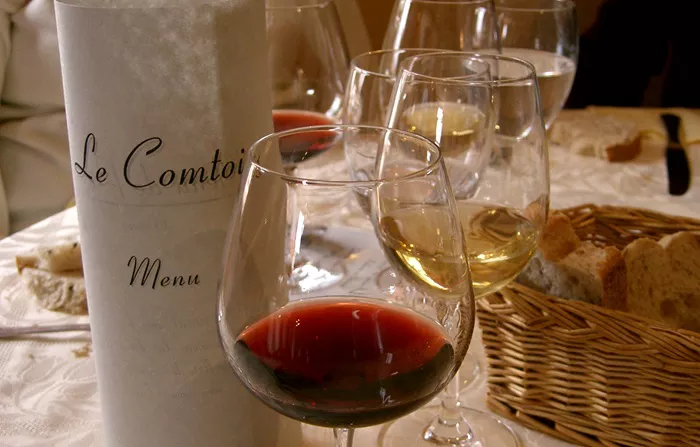Regional wine stereotypes, particularly those tied to longstanding traditions, have proven remarkably persistent over the years. However, shifting climate conditions and a wave of innovative producers are redefining the narrative, reshaping how certain regions and varietals are perceived. From France’s South West to Germany’s Baden, winemakers are crafting expressive, site-specific wines that challenge outdated assumptions and win over a new generation of consumers.
South West France: A New Face for Malbec
Long overshadowed by Bordeaux, the wines of South West France—particularly those from the Cahors appellation—have often been seen as rustic, dense, and tannic. Yet producers such as Fabien Jouves and Domaine la Calmette are reshaping the region’s identity.
According to Chris Leon, owner of Leon & Sons wine shop in Brooklyn, these producers are showcasing the nuanced potential of Malbec through biodynamic farming and a focus on soil diversity, notably limestone, marl, and clay. The result is a style marked by freshness, energy, and transparency—qualities rarely associated with Cahors.
Paul Wasserman of Becky Wasserman & Co., which exports Domaine de la Calmette wines, notes that Cahors was once known as the “black wine” due to its deep color and formidable structure. Today, thanks to meticulous vineyard management and minimal sulfur usage, the wines are more lifted and elegant. “These wines shatter expectations,” Leon says, pointing to their authenticity, affordability, and unique sense of place.
Barolo: Softening a Storied Reputation
Barolo’s reputation as a wine requiring decades of cellaring is giving way to a more nuanced understanding of Nebbiolo’s potential. G.D. Vajra, a key player in this shift, is producing wines with softer tannins and early approachability without sacrificing aging potential.
Kevin Natoli, North American Sales Manager for G.D. Vajra, explains that while the estate adheres to traditional practices such as long maceration and large Slavonian oak aging, it also employs stainless steel fermentation and full destemming to create more balanced wines.
Italian wine expert Jeff Porter highlights the Albe Barolo DOCG as a turning point. Crafted to highlight Nebbiolo’s elegance over tannic power, it exemplifies a broader movement toward accessibility. Giuseppe Vaira, second-generation winemaker at G.D. Vajra, emphasizes balance as the central pursuit: “Drinkability is one of the most important virtues in our wines.”
Abruzzo: Montepulciano with Finesse
The Montepulciano wines of Abruzzo have long been associated with dark, bold, and heavily oaked profiles. Yet Emidio Pepe has resisted prevailing trends, crafting wines that blend richness with finesse for decades.
Jeff Porter recalls that, even during the Parker era of powerful reds, Emidio Pepe remained steadfast in its commitment to elegance. Under the leadership of third-generation winemaker Chiara Pepe, the wines have reached new levels of aromatic complexity and balance—despite challenges posed by climate change.
Porter notes that these wines surprise consumers unfamiliar with the estate. Rather than delivering brute strength, they evoke emotion and vitality, proving that Montepulciano can be expressive, refined, and age-worthy.
Baden: Redefining German Pinot Noir
German Pinot Noir, or Spätburgunder, has often struggled under the weight of comparisons to Burgundy. Historically perceived as rustic and lacking finesse, the wines from Baden are now being re-evaluated, thanks in large part to the work of Wasenhaus.
Thatcher Baker-Briggs, founder of Thatcher’s Wine, credits Wasenhaus with redefining expectations. The estate’s wines—marked by clarity, precision, and expressive fruit—stand in stark contrast to Baden’s historical style. “They’ve written their own story,” he says.
Courtney Stebbings of Genuwine Imports notes that Wasenhaus focuses on low yields and quality-driven production, showcasing the diversity of Baden soils and the potential of Pinot Noir to express elegance and purity.
Ted Vance, owner of The Source, emphasizes the global appeal of Wasenhaus wines, which are now in high demand. “They brought something other than Riesling from Germany that interested the global market,” he says, lauding the estate’s role in elevating Baden’s international profile.
As Baker-Briggs puts it, Wasenhaus wines have become “mythical” in their scarcity and revered for their quality. “There should be a statue of Christophe and Alex [of Wasenhaus] in the region,” Vance quips, highlighting their transformative impact.
Across these diverse regions, a new generation of producers is proving that innovation and respect for terroir can go hand-in-hand. By challenging entrenched stereotypes and prioritizing balance, expression, and authenticity, they are changing the way the world thinks about wine.
You Might Be Interested In:


